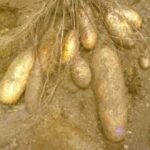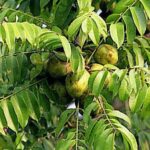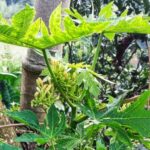Synonym: M. utilissima; Common names: Dyoko, Saka Saka (Kongo), Manioc (Fr.), Cassava roots
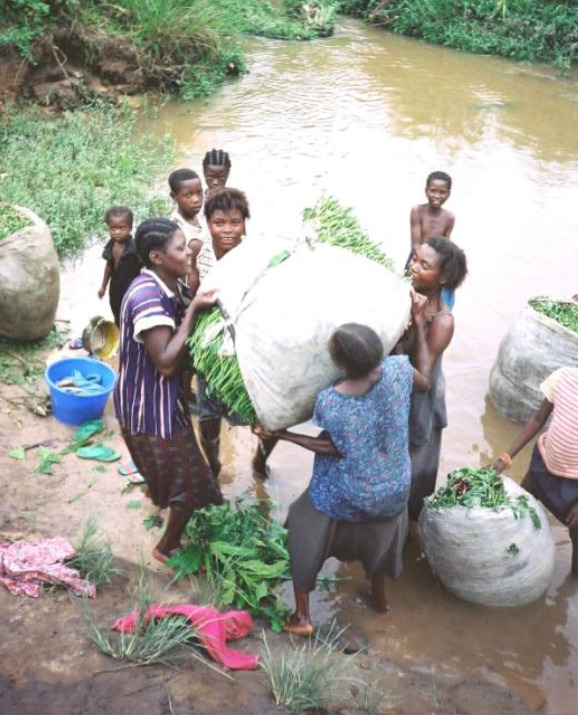
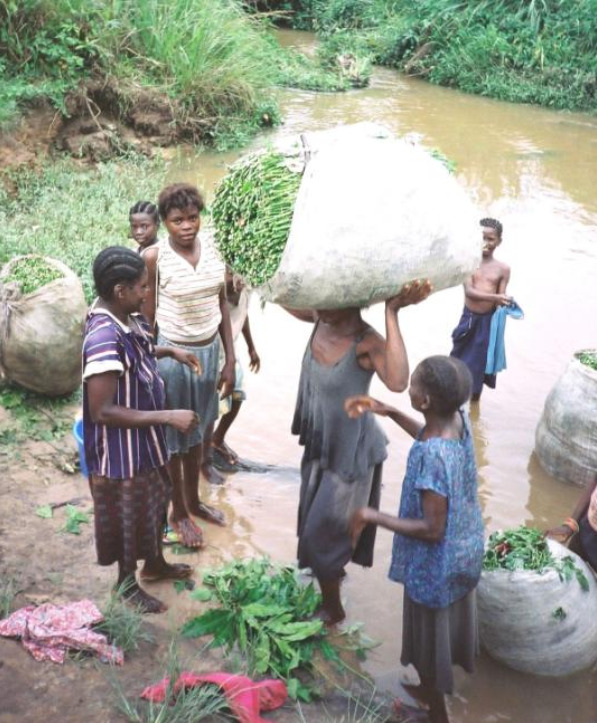

Description
A perennial shrub, up to 3 m high, with enlarged tuberous roots and a well-developed root system. There are many varieties, some of which are bitter and others sweet. Sweet varieties are short-season crops being harvested after 6 – 9 months. Some of these can be eaten raw. PRONAM and IITA have been responsible for breeding high-yielding, disease-resistant varieties such as Kinuani for Kongo Central, which is recommended along with the local variety Mpelolongi.
Ecology
Grown throughout the humid tropics in pure or mixed stands. Rainfall should be well distributed, but the plant can withstand periods of drought. Light sandy-clay soils of medium fertility give the best results, but they will grow on infertile soils if they are deeply cultivated to allow roots to penetrate.
Propagation
Plant using cuttings, with at least 3 buds, 10 – 30 cm long, taken from the basal to mid-section wood of plants at least 10 months old. If dry these can be stored for up to 8 weeks in cool, well-ventilated conditions. Otherwise, they can only be stored for 7 – 10 days. In Kongo Central planting is done at the start of the rains on mounds or ridges. When clearing the land weeds should be buried in the mounds as this has been found to increase yields. Cuttings of cassava roots should be planted at a sloping angle, burying them three-quarters of their length. This encourages the roots to penetrate deeper. Plant 1 m apart in both directions for a pure stand or 2 – 3 m for a mixed crop. Keep land weed-free until the crop covers the soil. Ridge up after 8 – 12 weeks to encourage tuber formation.
Management
Intercropping with Stylosanthes guianensis is a cost-effective method of installing a permanent cover in which cassava and other crops can be grown. Cassava leaves should not be harvested more frequently than at 2-month intervals otherwise tuber yield is affected.
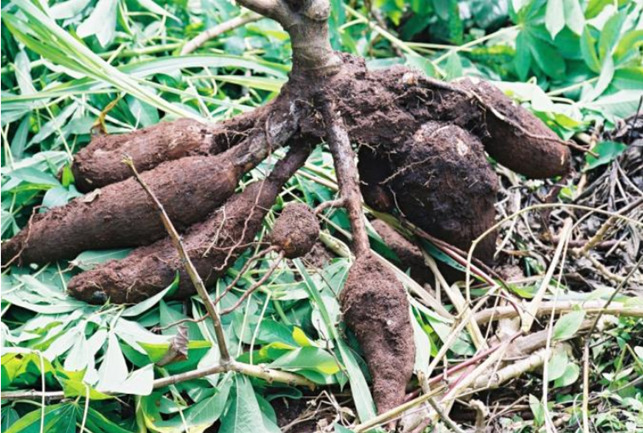
Uses
Cassava roots provide the staple food in Kongo Central, but they are low in protein and lack vitamins. The carbohydrate is however easily digested. The leaves are cooked as the principal vegetable (Nsaki) and are rich in protein (over 6% of fresh material), minerals, and vitamins. Cassava flour can be used to replace up to 20% of wheat flour in bread making. Adding 1% of a dough conditioner such as calcium stearoyl lactylate, improves the bread. Bread can also be made from a mixture of 80% cassava flour and 20% soya bean meal after adding 4% of an emulsifier, such as glycerol monostearate, or extruded maize starch (up to 15% of the cassava flour), to the dough. Some varieties of cassava flower during the rainy season and provide bees with pollen and nectar. In Kongo Central, the young leaves are sometimes used as an abortive.

References
Gillet & Pâque 1910, Léonard 1962, Kay 1973, Daeleman & Pauwels 1983, Mbemba & Remacle 1992, Pauwels 1993, Burkill 1994, Raemaekers 2001, Bulakali et al. 2014
___________________________________________________________________________________________________________
Text and all photos at this article © Paul Letham. The professional background and contact information of the author of this article, can be found here.
.



